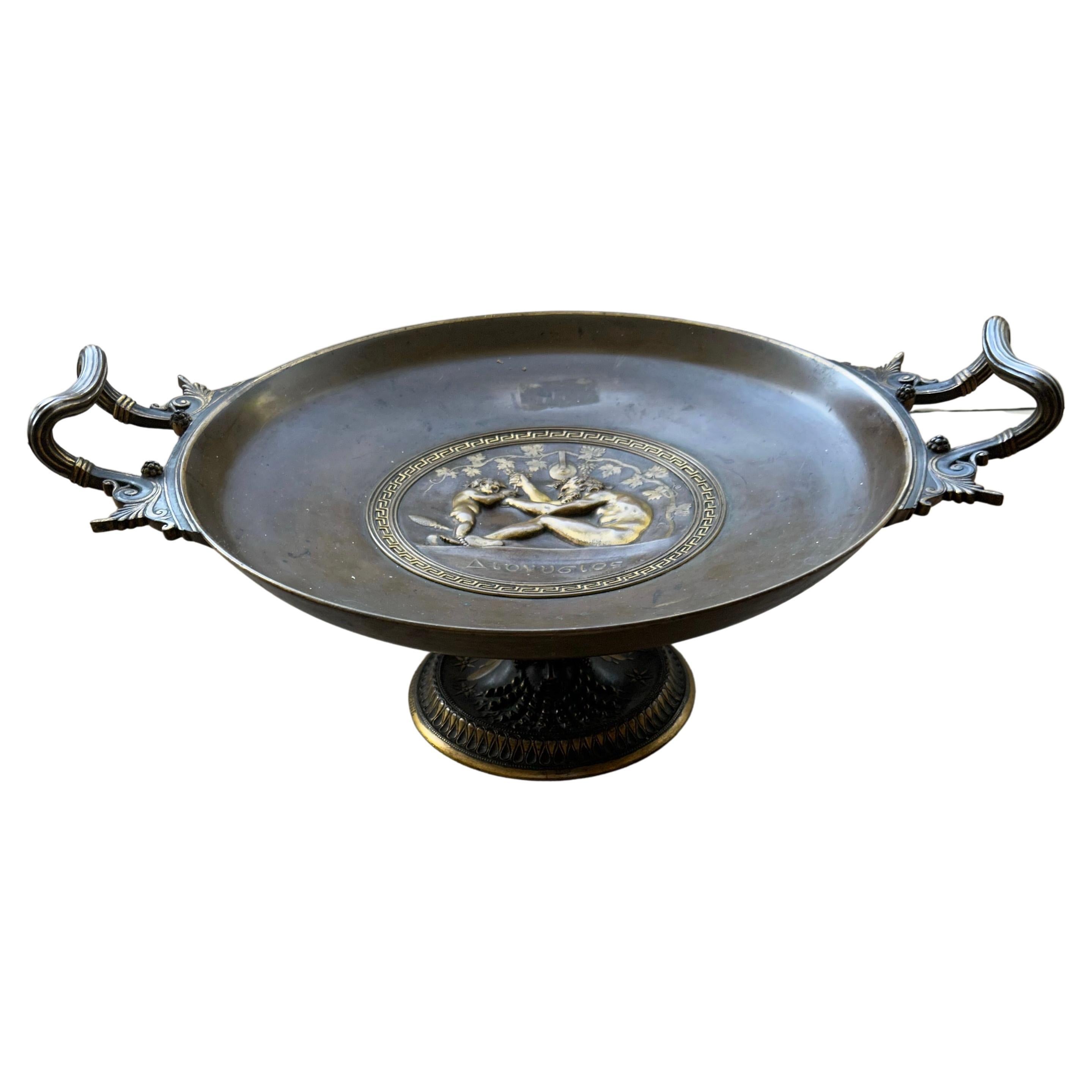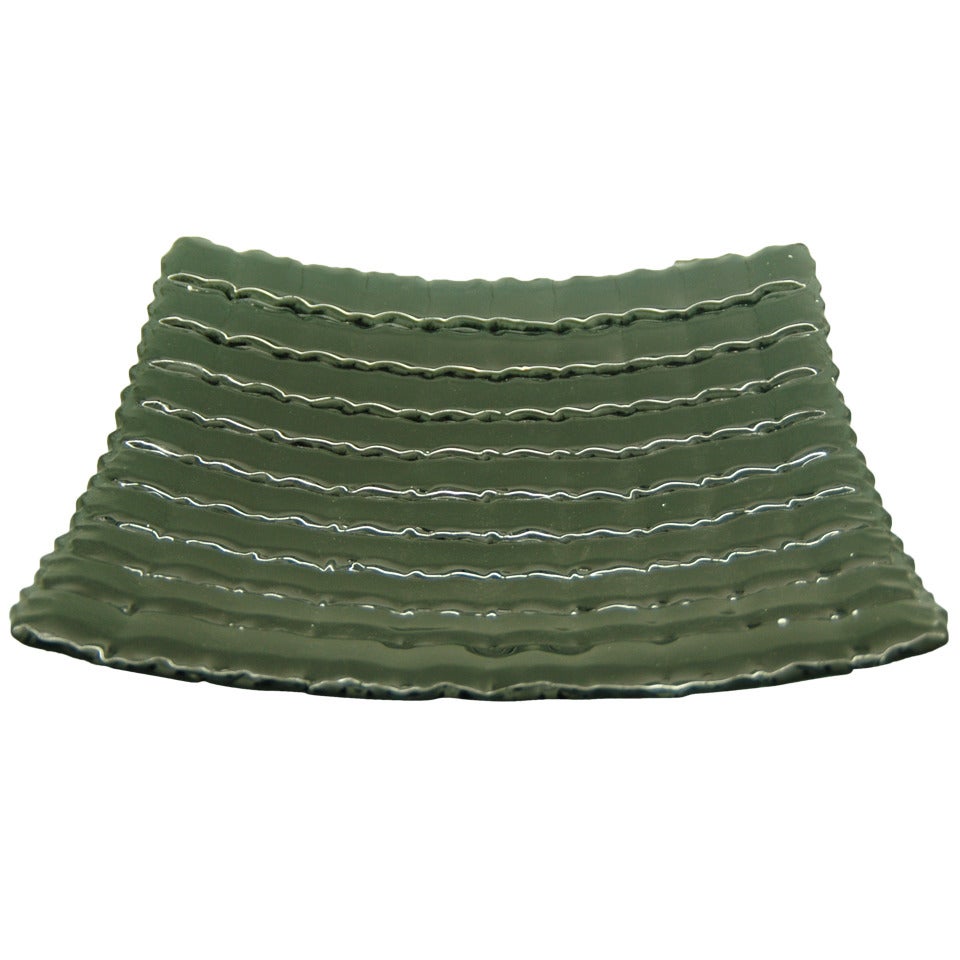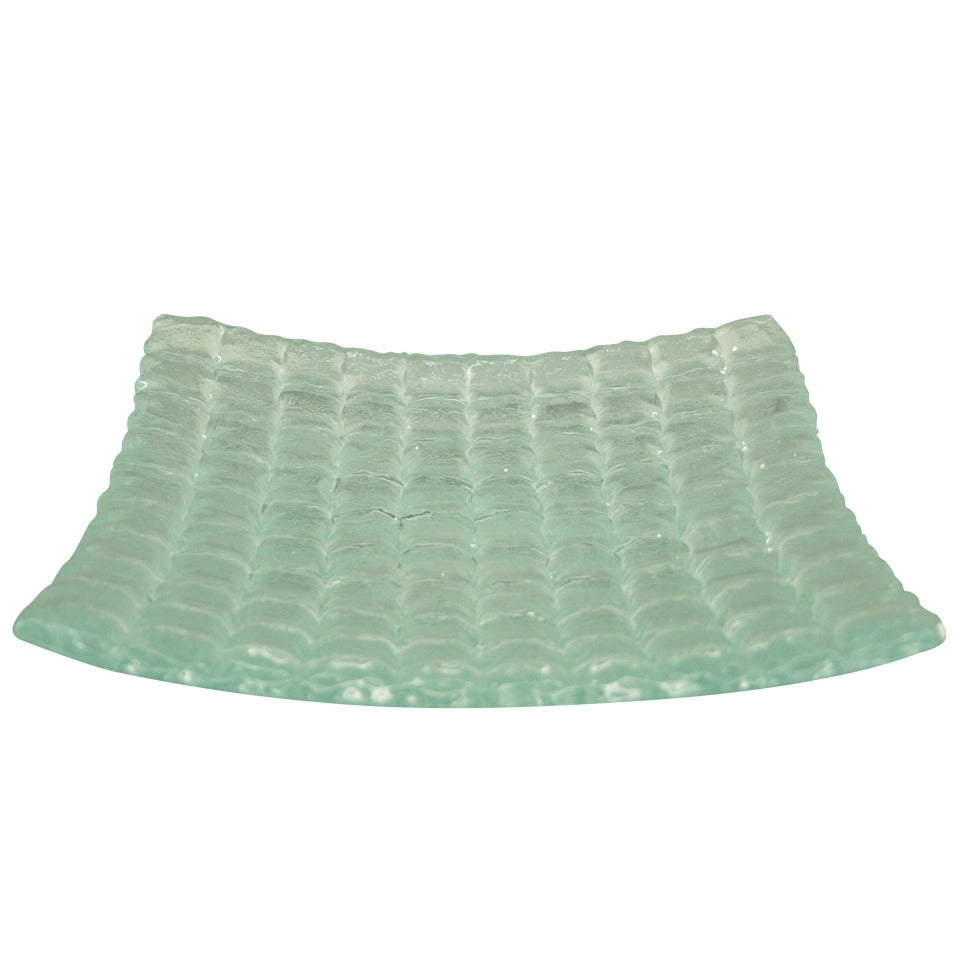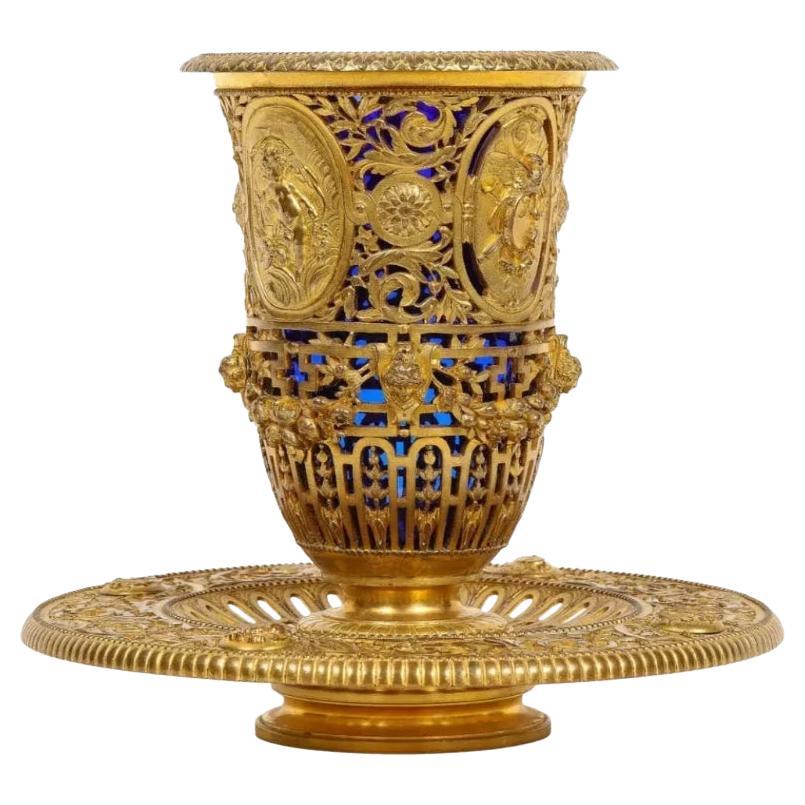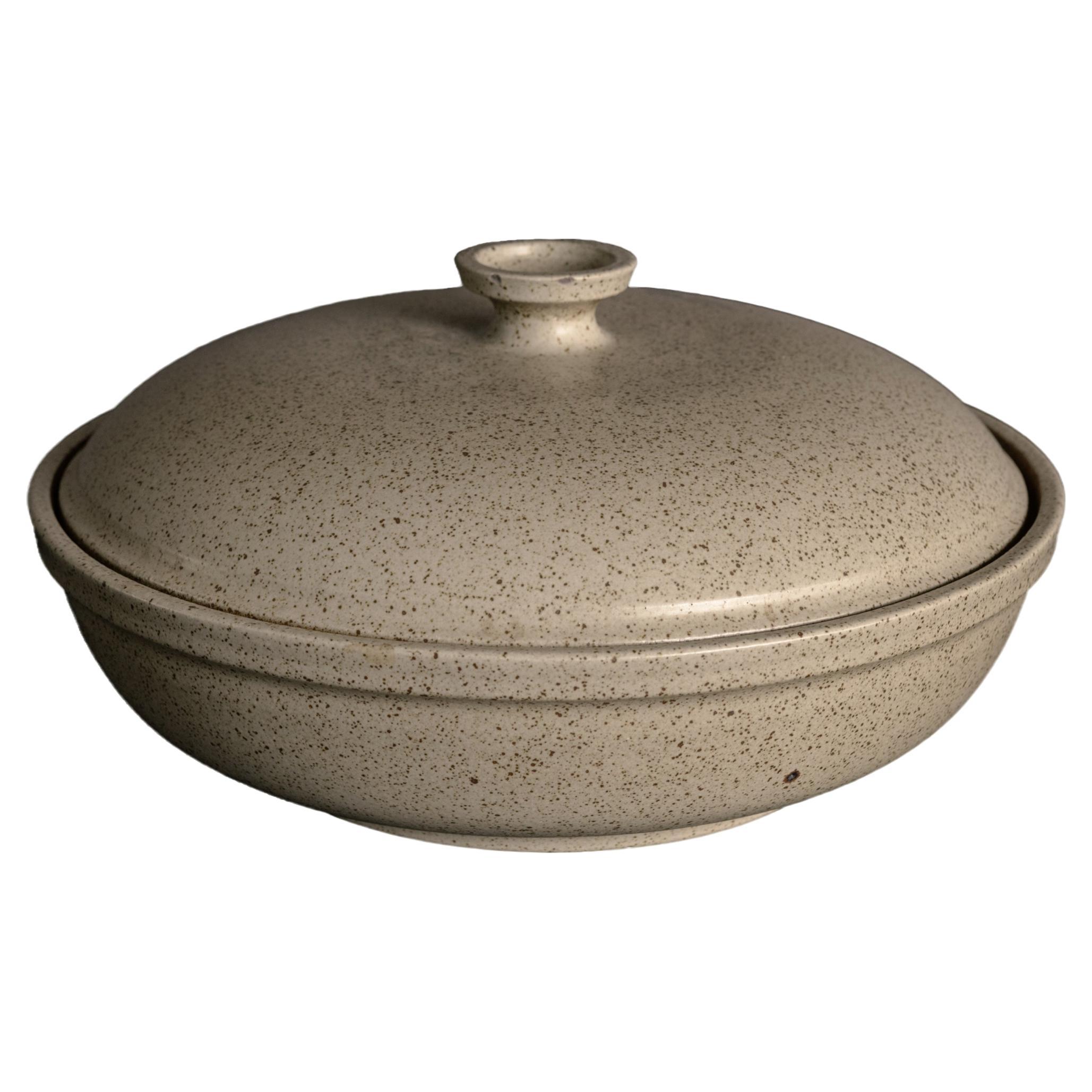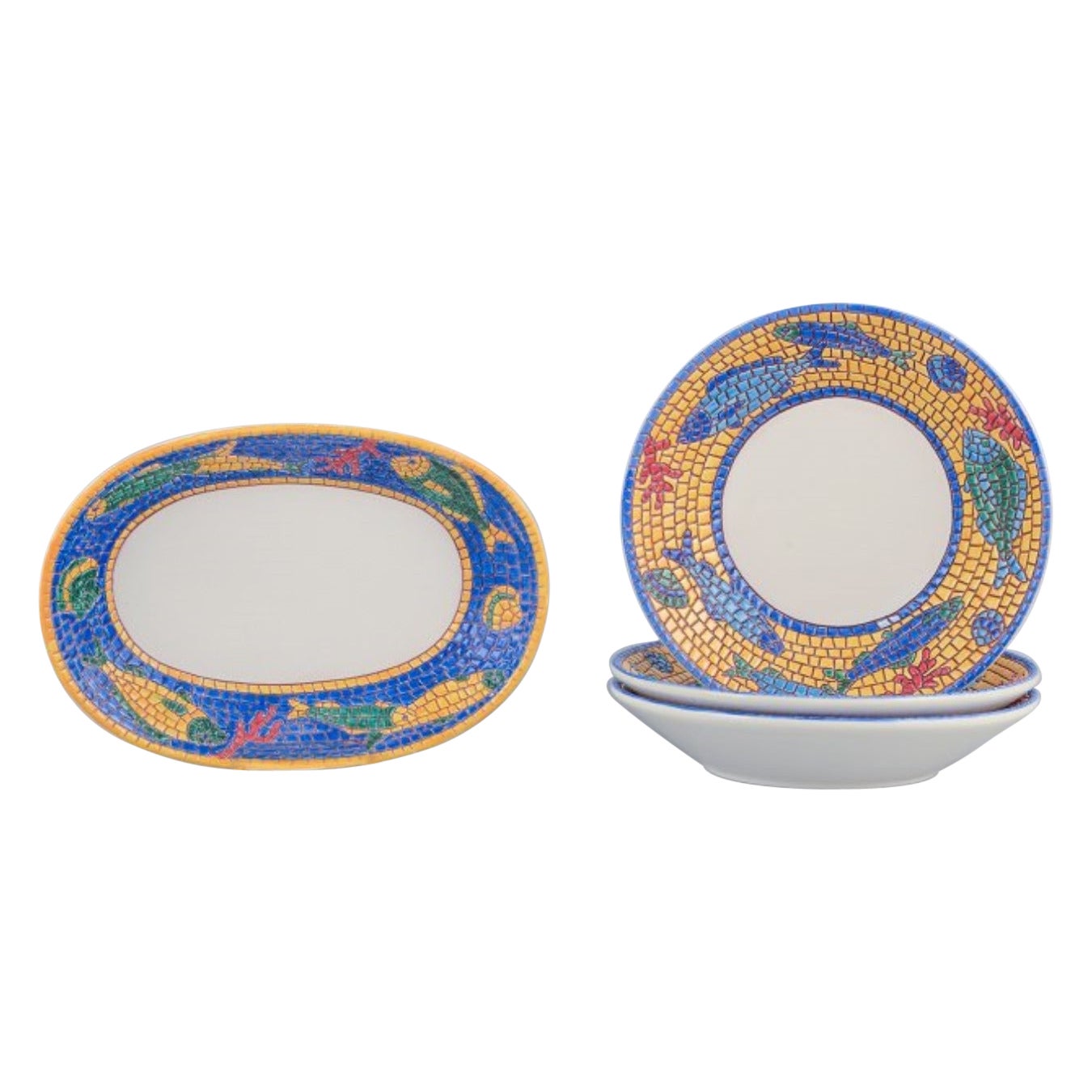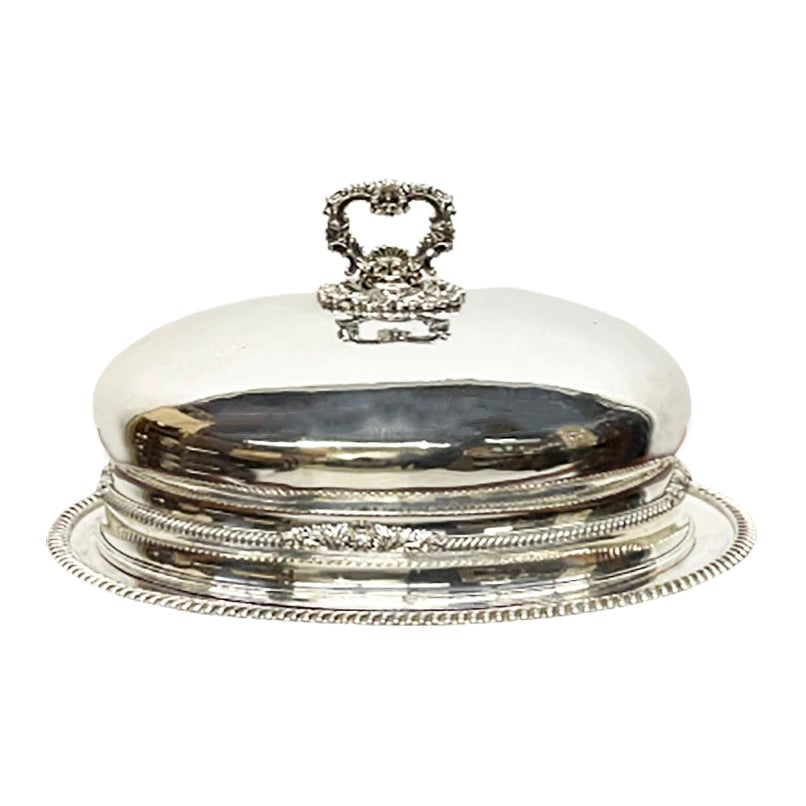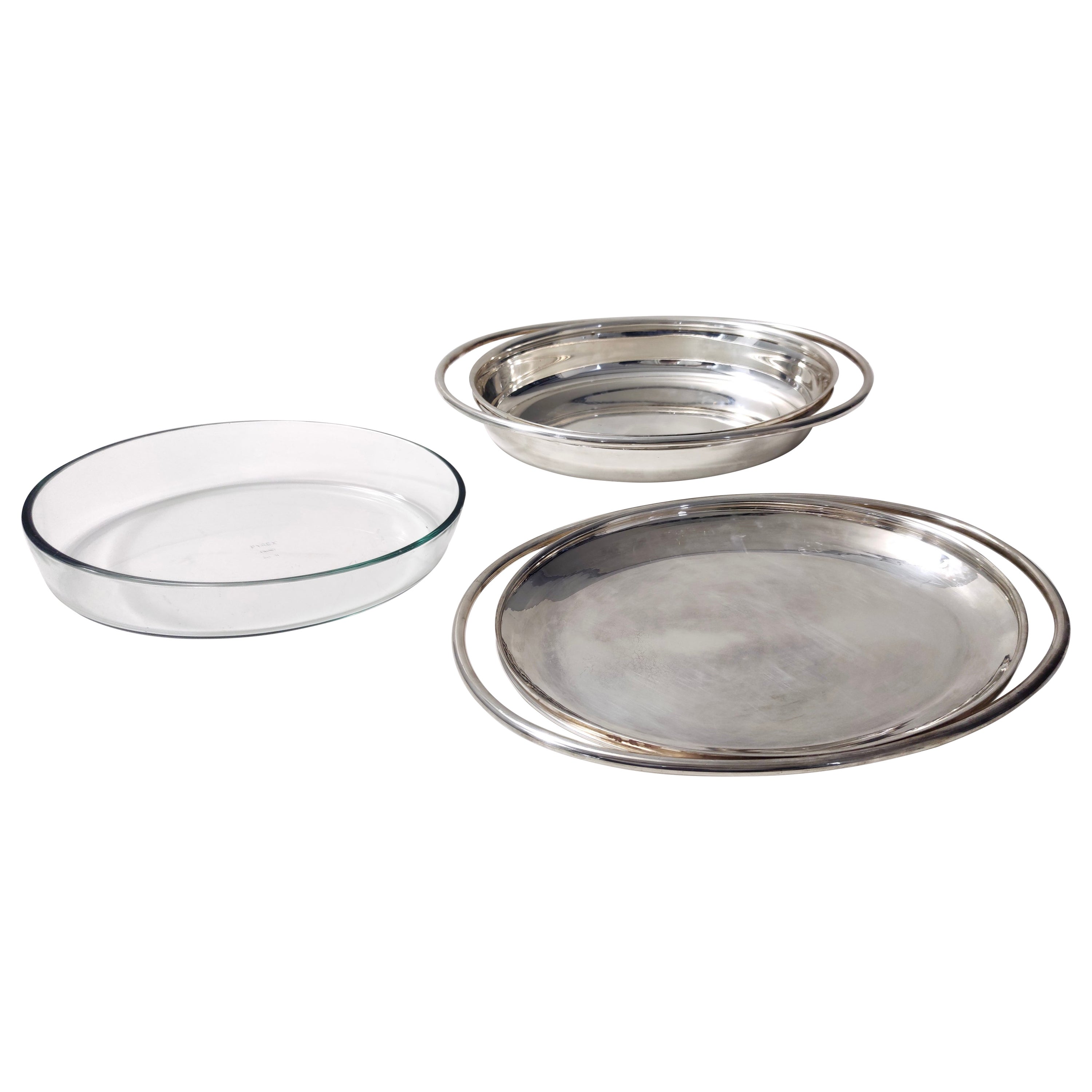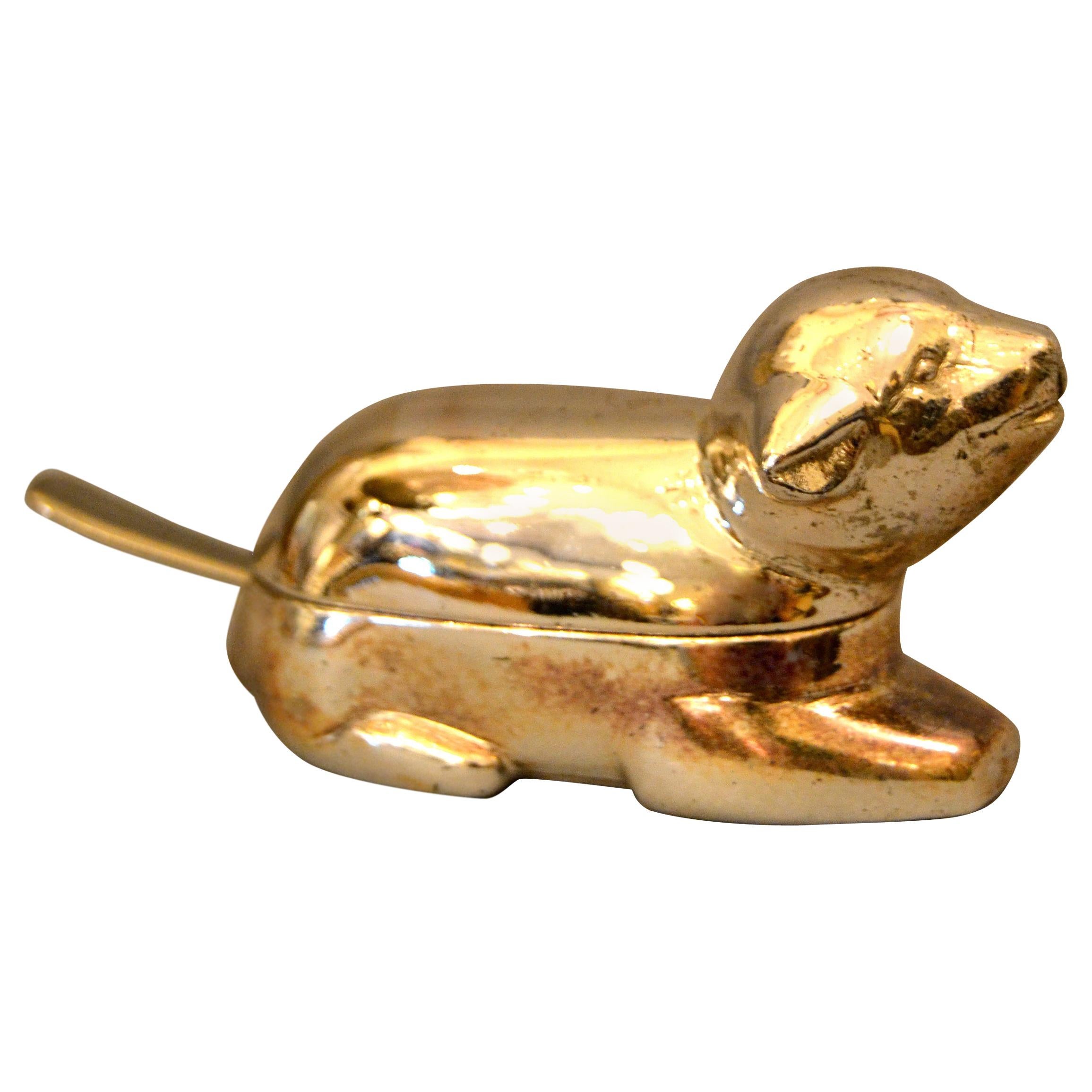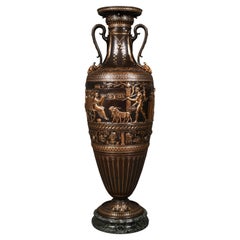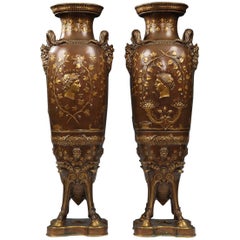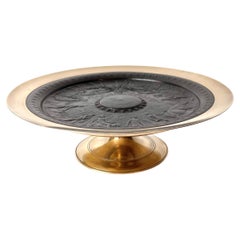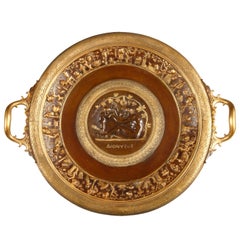
Large “Dionysos” Display Dish by F. Levillain and F. Barbedienne
View Similar Items
Large “Dionysos” Display Dish by F. Levillain and F. Barbedienne
About the Item
- Creator:Ferdinand Barbedienne (Maker),Ferdinand Levillain (Sculptor)
- Dimensions:Height: 5.52 in (14 cm)Width: 27.17 in (69 cm)Depth: 22.45 in (57 cm)
- Style:Classical Greek (In the Style Of)
- Materials and Techniques:Bronze,Patinated
- Place of Origin:
- Period:
- Date of Manufacture:Circa 1880
- Condition:
- Seller Location:PARIS, FR
- Reference Number:Seller: 10221stDibs: LU3860312115841
Ferdinand Levillain
Ferdinand Levillain had his debut at the Paris Salon in 1861 and won recognition through the 1860s and 1870s for his work with the highly respected Barbedienne. In 1878, he ceased his collaboration with Barbedienne and triumphed alone at the Exposition Universelle, where he won the gold medal for his work referencing Antiquity. In 1884, Levillain was awarded a first-class medal at the Salon and in 1889, a silver medal at the Exposition Universelle. In 1892, he was recognized with the highly prestigious Légion d'Honneur. Examples of his work are displayed in many museums, including the Musée de Lyon and the Musée d'Art Moderne in Paris. Levillain also collaborated with the Sèvres manufactory and won several medals, which are still visible today at the Louvre Museum and the Musée des Beaux-Arts in Angers.
Ferdinand Barbedienne
Founded by one-time Parisian wallpaper dealer Ferdinand Barbedienne and engineer Achille Collas, one of the most revered foundries in 19th-century France began with the invention of a revolutionary 1830s-era device that could produce proportional reproductions — large or small — of sculptures. Collas’s machine, which yielded miniature likenesses of antiquities for the interiors of homes the world over, was pivotal to the success of the F. Barbedienne Foundry. The successful firm earned prestigious awards and critical acclaim and created exquisite bronze candleholders, clocks and lamps for a range of wealthy and prominent clients.
The duo first launched their company under the name Société Collas et Barbedienne, and early on, they optimized chemical processes for pigmenting and patinating their bronze statuettes. After Collas died in 1859, Barbedienne forged on alone, and the company’s name changed to simply F. Barbedienne.
Barbedienne employed more than 300 workers at that point, and the Maison created a range of furnishings and decorative objects that featured the integration of marble and ormolu accents. However, with the onset of the Franco-Prussian War of 1870, the foundry was forced to retrofit its molds, and the production of cannons replaced sculptures, furniture and vases.
When Ferdinand Barbedienne passed away in 1891, his nephew and heir, Gustave Leblanc, took over as president, changing the name to Leblanc-Barbedienne. Leblanc expanded production into Germany, the United Kingdom and the United States, carrying on the company's legacy with monumental sculptures, and models and securing production rights for famous statues. Paul-Alexandre Dumas, an Art Nouveau maker and student of Louis Majorelle, succeeded Leblanc until the company's closing in 1952.
Barbedienne pieces had been exhibited regularly in the 19th century and were especially prevalent at Europe’s international expositions and world’s fairs, where they received numerous prizes. Today, the Musée d’Orsay in Paris holds dozens of Barbedienne works in its collection, including intricate mirrors, vases and cups created by Louis-Constant Sévin at the foundry. For more than two decades, Sévin created lamps, boxes and more at Maison Barbedienne. Working alongside award-winning chaser Désiré Attarge, Sévin designed Napoleon III-era works that greatly appealed to European nobility.
Other notable artists who collaborated with Barbedienne included Eugene Aizelin, Emmanuel Fremiet, Antonin Mercié, Emile Guillemin, Edouard Lievre, Ferdinand Levillain and Auguste Rodin.
On 1stDibs, find a collection of antique Ferdinand Barbedienne decorative objects, lighting and more.
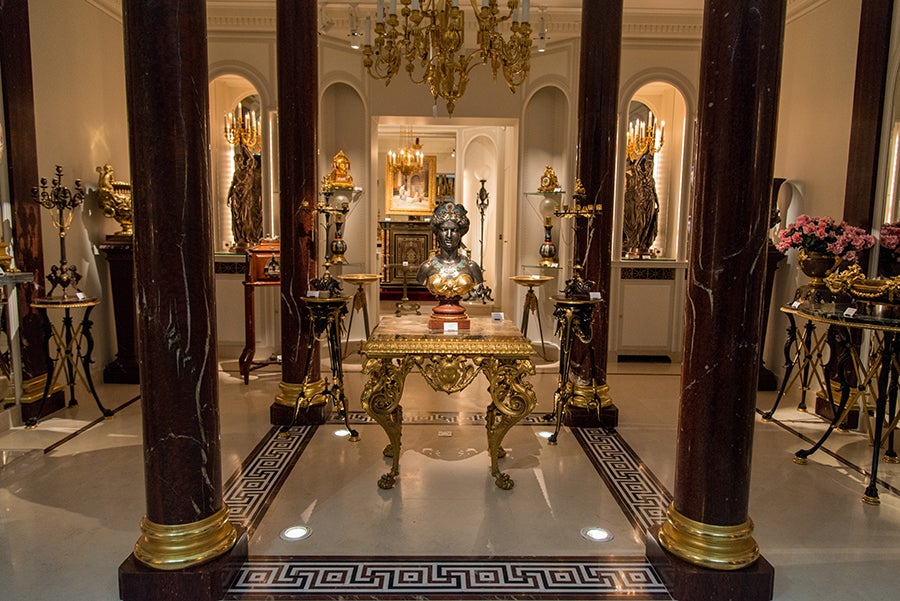
- Large Neo-Greek Vase by F. Levillain & F. Barbedienne, France, circa 1890By Ferdinand Barbedienne, Ferdinand LevillainLocated in PARIS, FRImportant neo-Greek vase in the shape of an Amphora, made in two patina bronze. The body is decorated with a rich continuous frieze in bas-relief presenting a procession of characters carrying their offerings to the temple, underlined by a decoration of theatrical masks among olive trees. The 's'-scroll handles decorated with grape vines, resting only on the shoulder of the vase, are supported by a ram’s head. Numerous palmettes and friezes adorn the whole. Resting on a molded marble circular base. Biography Ferdinand Levillain (Paris, 1837-1905) studied under the sculptor Jouffroy (1806-1882), before making his debut in 1861 at the French Artists Salon where he continued to exhibit until 1903. At the 1867 Universal Exhibition in Paris, he was praised for a Neo-Greek style bronze cup he made for the firm Blot and Drouard. He was not to become really famous, however, until 1871 thanks to his association with the great bronze founder Ferdinand Barbedienne, who began to exhibit Neo-Greek style lamps...Category
Antique 1890s French Greek Revival Vases
MaterialsMarble, Bronze
- Fine Pair of Neo-Greek Vases by F. Levillain and F. Barbedienne, France, c. 1890By Ferdinand Levillain, Ferdinand BarbedienneLocated in PARIS, FRSigned F. Levillain sculpteur and F. Barbedienne. Pair of Greek style vases made of two patina bronze. Each, designed in the shape of a amphora resting on four hoof feet and a quadrilobed base, is decorated in low-relief with ancient times scenes of grape harvest and picking hops. Overleaf vases, profiles of gods Ariadne and Bacchus are ornated with grape vines and cornucopias. The handles are supported by two bearded heads of gods. Here is the model titled Amphore vendangeurs, modèle n°1 (68 cm), edited by Barbedienne after 1891. We find it in the catalogs until 1911. The figure of Bacchus is a subject dear to Ferdinand Levillain, which he exhibited bronze medallions in his first exposition as well as Universal Exhibitions in which he participated. Ferdinand Levillain (Paris, 1837-1905) studied under the sculptor Jouffroy (1806-1882), before making his debut in 1861 at the French Artists Salon where he continued to exhibit until 1903. At the 1867 Universal Exhibition in Paris, he was praised for a Neo-Greek style bronze cup he made for the firm Blot and Drouard. He was not to become really famous, however, until 1871 thanks to his association with the great bronze founder Ferdinand Barbedienne, who began to exhibit Neo-Greek style lamps...Category
Antique 1890s French Greek Revival Vases
MaterialsBronze
$14,059 Sale Price / set60% Off - Important Pair of Neo-Greek Vases by Levillain and Barbedienne, France, C. 1878By Ferdinand Levillain, Ferdinand BarbedienneLocated in PARIS, FRThe model of these Etruscan Amphoras has been exposed at the 1878 Paris Universal Exhibition. Each with a waisted neck raised with bearded satyr ma...Category
Antique 1870s French Greek Revival Vases
MaterialsMarble, Bronze
- Pair of Neo-Greek Amphora Vases by Barbedienne and Levillain, France, circa 1880By Ferdinand Barbedienne, Ferdinand LevillainLocated in PARIS, FRPair of Greek style vases made two patina bronze. Each, designed in the shape of a tripod amphora adorned with Hercules heads, is decorated in low-relief...Category
Antique 1880s French Greek Revival Vases
MaterialsGriotte Marble, Bronze
$4,997 Sale Price / set30% Off - Pair of Neo-Greek Vase-Candlesticks Attr. to Barbedienne and Levillain, c. 1880By Ferdinand Barbedienne, Ferdinand LevillainLocated in PARIS, FRPair of Greek style amphora shaped candlesticks made of gilded and patinated bronze attributed to F. Levillain and F. Barbedienne. Each flanked with two handles, and decorated with horsemen in relief. Standing on three lion’s feet headed with busts of putti and raised on a red griotte marble base. Ferdinand Levillain (Paris, 1837-1905) studied under the sculptor Jouffroy (1806-1882), before making his debut in 1861 at the French Artists Salon where he continued to exhibit until 1903. At the 1867 Universal Exhibition in Paris, he was praised for a Neo-Greek style bronze cup he made for the firm Blot and Drouard. He was not to become really famous, however, until 1871 thanks to his association with the great bronze founder Ferdinand Barbedienne, who began to exhibit Neo-Greek style lamps...Category
Antique 1880s French Greek Revival Table Lamps
MaterialsBronze
$3,998 Sale Price / set57% OffFree Shipping - Elegant Pair of Bronze Torcheres by F. Barbedienne, P. Dubois and A. FalguièreBy Jean Alexandre Joseph Falguière 1, Ferdinand Barbedienne, Paul DuboisLocated in PARIS, FRMODEL PRESENTED AT THE 1867 PARIS UNIVERSAL EXHIBITION Listed in the Ferdinand Barbedienne’s catalogue as the “Deux femmes debout” (Two standing ladies) Signed on each one P. Dubois – F. Barbedienne Fondeur and A. Falguière – F. Barbedienne Fondeur Rare pair of parcel-gilt and patinated bronze figures, representing two women dressed in Antique style costume with jewels, each upholding a seven lights-arm candelabra. Standing on round bronze bases and black marble socles. Paul Dubois (1827-1905) entered the Paris Beaux-Arts School in 1858. He exhibited at the 1865 Salon the Chanteur Florentin, illustrating Florentine sculpture, observed after his journey in Italy. This work, cast that time in silvered bronze, was exhibited at the 1867 Paris Universal Exhibition (now preserved at the Orsay museum). Dubois' success brought him many commissions, both private (Portrait of Duc d'Aumale) and public (Jeanne d'Arc, in Reims). Appointed curator at the Luxembourg museum in 1873, Dubois became also a member of the Institute and finally headmaster at the Beaux-Arts School in 1878. Alexandre Falguière (1831-1900) studied under Jouffroy at the Paris Ecole des Beaux-Arts, began his career at the Paris Salon in 1857 and won as soon as 1859 the “Prix de Rome”. Falguière became very quickly successful and was several times awarded medals at the Salon, such in 1868 with his marble sculpture Tarcisius the Christian Boy-Martyr, or at the 1867 Paris Universal Exhibition, where he won the first medal in his category. Thanks to that success, he was immediately commissioned by private collectors as well as by the French State, whom asked him in 1878 to realize the Triomphe de la République, placed in 1881 at the summit of the Paris Arch of Triumph...Category
Antique 1860s French More Lighting
MaterialsBronze
- Neo-Grec Bronze and Patinated Bronze Tazza by F. Levillain, Cast by BarbedienneBy Ferdinand LevillainLocated in Knivsta, SEA beautiful Neo-Grec Tazza in bronze and patinated bronze, signed by the artist Ferdinand Levillain ( 1837-1905) and cast by the famous Ferdinand Barbedienne (1810-1892). France 1...Category
Antique 1860s French Centerpieces
MaterialsBronze
- Antique Handcrafted Bronze Table Centerpiece Bowl by F. Levillain & BarbedienneBy F. Barbedienne Foundry, Ferdinand LevillainLocated in Lisse, NLStunning French bronze tazza with wine & Bacchus theme, by Ferdinand LEVILLAIN (1837-1905). Every time we find an antique of this extraordinary quality and beauty we wonder what p...Category
Antique 19th Century French Classical Roman Centerpieces
MaterialsBronze
- Remarkable Large Glass DishBy Roberto Giulio RidaLocated in NYC, NYA beautifully executed large glass dish with an incised pattern of squares. Beautiful when paired with the clear version listed.Category
Late 20th Century Italian Minimalist Tableware
- Remarkable Large Modern Glass DishBy Roberto Giulio RidaLocated in NYC, NYA beautifully executed large glass dish with an incised pattern of squares. Beautiful when paired with the dark version listed.Category
Late 20th Century Italian Minimalist Tableware
MaterialsGlass
- Louis Constant Sévin & F. Barbedienne, a Rare Ormolu and Blue Glass CenterpieceBy F. Barbedienne FoundryLocated in New York, NYLouis Constant Sévin & F. Barbedienne, a rare ormolu and blue glass centerpiece, circa 1880. This fantastic quality centerpiece vase is made with the...Category
Antique 19th Century French Tableware
MaterialsBronze, Ormolu
- Large Terra Major Speckled Dish with Lid by David Cressey for APBy David CresseyLocated in Los Angeles, CALarge Speckled Dish with Lid for Terra Major Gourmet Ware by David Cressey, Architectural Pottery, c. 1970's, USA Glazed Stone White H 8.75" x D 17.75" FDV-L022 *Wear consistent w...Category
Vintage 1970s American Tableware
MaterialsStoneware

